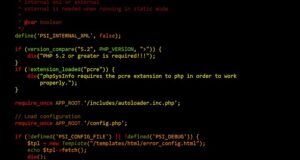Table of Contents
Can ReactJS work with Java? This is a question that many developers are asking as they look to develop the most innovative, up-to-date technology. With the ever-increasing scope of web development, the ability to mix and match different technologies is becoming increasingly important. What advantages can be gained by combining ReactJS with Java? What potential issues could arise from this combination? Does combining ReactJS and Java make the most sense for a given project?
The combination of ReactJS and Java presents many potential advantages but also a number of potential issues. On one hand, ReactJS and Java offer different syntaxes, features, and frameworks that can be utilized to build a powerful, feature-rich application. On the other hand, ReactJS and Java also offer different approaches to application development, which could complicate development tasks and require developers to learn both frameworks.
In addition, ReactJS and Java have distinct memory management mechanisms that can be difficult to integrate. For example, ReactJS works with a virtual DOM to ensure that its memory is efficiently used. Java, on the other hand, works differently, with its own garbage collection process and memory management systems. Combining the two could present a number of challenges, which must be taken into consideration before beginning the development process.
In this article, you will learn about the potential advantages and disadvantages of using ReactJS with Java. You will also find detailed information on how to integrate the technologies, best practices for combining the two, and potential problem areas. Solutions and strategies will be provided to help developers efficiently manage memory, maintain code clarity, and ensure a successful integration of ReactJS and Java.Definitions:
ReactJS is an open source JavaScript library used for developing user interfaces. It is maintained by Facebook and an individual developer community. ReactJS is used for building sophisticated front-end web applications that can change data without having to reload the page.
Java is a class-based, object-oriented programming language developed by Sun Microsystems in 1995. It runs on any platform and is used to create server-side applications, web-based applications, and applets. It is one of the most widely used programming languages in the world.
While ReactJS and Java are two different technologies, it is possible to make them interact with each other. Integrating ReactJS with Java involves using a native bridge such as the Java Native Interface (JNI) or an open source library such as the Spring Framework. This allows developers to write components of a ReactJS application in Java and vice versa. The integration enables ReactJS developers to write code in Java while using all the benefits of ReactJS to build rich web applications.
Overall, ReactJS and Java can be used together through integration, allowing developers to take advantage of both technologies. With integration, developers can create powerful web applications which combine the best of both ReactJS and Java.
Introduction to ReactJS
Introduction to ReactJS
ReactJS is a JavaScript library used for building user interfaces. The library is the foundation of a wide range of popular web applications and frameworks such as Angular and React Native and is a core piece of technology for many web developers. ReactJS enables developers to create interactive user interfaces with a focus on simplicity, high performance, and scalability. It is praised for its fast rendering, code reuse, and component-based structure.
Compatibility with Java
One of the great features of ReactJS is its ability to work with other frameworks and languages, including Java. Unlike some other JavaScript libraries, ReactJS does not require the use of JavaScript for every element on the page; it allows developers to integrate Java elements into their projects. This ability makes ReactJS a versatile library and makes it easier to build cross-platform applications.
Benefits of Using ReactJS with Java
By combining ReactJS with Java, developers can create powerful, responsive user interfaces with great performance and scalability. ReactJS has an intuitive programming model, relying heavily on components to enable modular development and making it easier to understand and debug. It is also lightweight and efficient, which makes it a great choice for large-scale applications. Other advantages include code reusability and the support of third-party libraries, making it easier to extend the product.
- Faster render times
- Ability to integrate Java elements
- Intuitive programming model
- Lightweight and efficient
- Excellent scalability
- Code reusability
- Support for third-party libraries
What is Java?
What is Java?
Java is a general-purpose computer programming language that is concurrent, class-based, object-oriented, and specifically designed to have as few implementation dependencies as possible. It is intended to let application developers “write once, run anywhere” (WORA), meaning that compiled Java code can run on all platforms that support Java without the need for recompilation. Java applications are typically compiled to bytecode that can run on any Java virtual machine (JVM) regardless of computer architecture.
Java is, as of 2016, one of the most popular programming languages in use, particularly for client-server web applications, with a reported 9 million developers. Java was originally developed by James Gosling at Sun Microsystems (which has since been acquired by Oracle Corporation) and released in 1995 as a core component of Sun Microsystems’ Java platform.
How Java Works?
The Java programming language relies on the Java Virtual Machine (JVM) to execute code written in the language. The JVM acts as a “virtual” computer on which Java applications will be run, allowing them to be platform independent.
When a Java application is executed, it is first translated to bytecode, a language that is platform independent but not yet ready for execution. The bytecode is the run on the JVM, which performs the actual execution of the program. This means that this virtual machine is running on the actual computer, not the Java program itself. The output is then rendered on the computer.
Can ReactJS Work with Java?
ReactJS is a JavaS
Can ReactJS work with Java?
Introduction
Java and ReactJS have both become incredibly popular technologies in recent years. While they may not often be used together in the same project, there are certain situations where combining the two may provide an amazing customer experience. In this article, we’ll explore the ways that ReactJS and Java can be used together and what benefits that combination can bring.
Combining ReactJS and Java
ReactJS is a JavaScript library for creating user interfaces that is best suited for single page applications. It is highly popular amongst developers as it creates components that are easy to maintain. On the other hand, Java is a strongly typed language best suited for creating powerful web applications. Combining the two gives the developer the power to create powerful applications that can also take advantage of the user interface development options provided by ReactJS.
Using the two technologies together may also simplify development processes. If a project requires both front-end and back-end functionalities, developing the two components separately and then putting them together may be a tedious process. Developing both with the same underlying technology simplifies the development process immensely. Furthermore, for applications with multiple layers, using the same technology stack for each layer makes maintenance and debugging much easier.
Leveraging Both Technologies Together
Using Java and ReactJS together in a project enables the developer to take advantage of the strong typing of Java. Every piece of code written in Java is strongly typed, allowing for better compile-time error checking and preventing run-time bugs. Additionally, because ReactJS is a JavaScript library, all of the dynamic elements can be handled without too much hassle.
Furthermore, as the user interface layer is powered by ReactJS, the developers can take advantage of the user experience and performance improvements that it provides. ReactDOM, the virtual DOM system in ReactJS, can render changes to the user interface faster than the traditional DOM systems found in most frameworks. Additionally, as a JavaScript library, ReactJS provides developers with a whole suite of user interface components to choose from in order to customize the experience for the end-user.
In conclusion, combining ReactJS and Java provides developers with the power to create powerful web applications while customizing the user interface to provide an amazing customer experience. Furthermore, it simplifies the development process and maintenance of the application in the long run.
Conclusion
.
It’s a thought-provoking question: Is it possible to merge the power of ReactJS and Java into one cohesive platform that will help developers create the best possible solutions? The answer is yes; these two powerful languages can do some incredible things together.
In order to explore the full potential of ReactJS and Java, however, you need to have a deep understanding of both. Following this blog and keeping an eye out for new releases can help you keep up with the newest advancements in both ReactJS and Java development.
Q1: How can ReactJS and Java work together?
A1: ReactJS and Java can be used together to create powerful applications. Java provides the server-side technology that facilitates the user interface created with ReactJS. ReactJS allows for faster development cycles, enhanced user experience, and a more reliable architecture.
Q2: What kind of user experience can we expect when using ReactJS and Java?
A2: Combining ReactJS and Java can lead to highly responsive web applications that provide a great user experience. ReactJS provides the dynamic components that make up the user interface, while Java facilitates the back-end functionality. This combination can provide users with everything from smooth navigational elements to speedy application responses.
Q3: Is a deep understanding of these two languages needed to make them work together?
A3: Yes, in order to get the most out of ReactJS and Java, you need to have a comprehensive knowledge of both. Understanding the features and capabilities of each language allows you to create more efficient applications which facilitates better performance and user experience.
Q4: What kind of applications can be built with ReactJS and Java?
A4: ReactJS and Java can be used to create a wide variety of applications, from single page applications to complex web or mobile applications. This combination of languages is suitable for creating applications with a robust architecture and powerful functionality.
Q5: How often do these technologies need to be updated?
A5: It is important to stay on top of the advancements in both ReactJS and Java, as they are constantly being updated. Keeping an eye out for new releases of either language allows you to update your applications and take advantage of the latest features.

